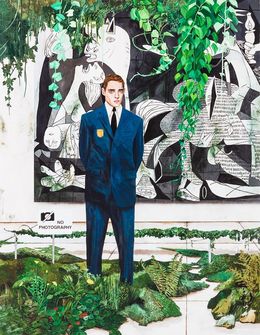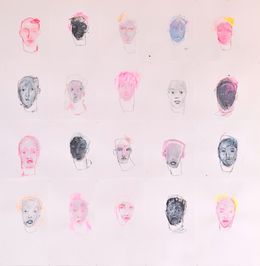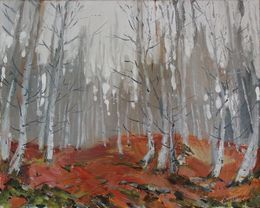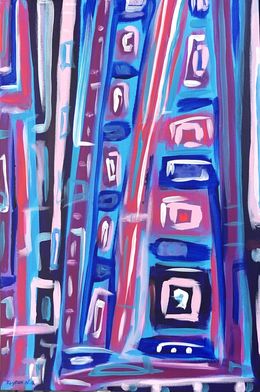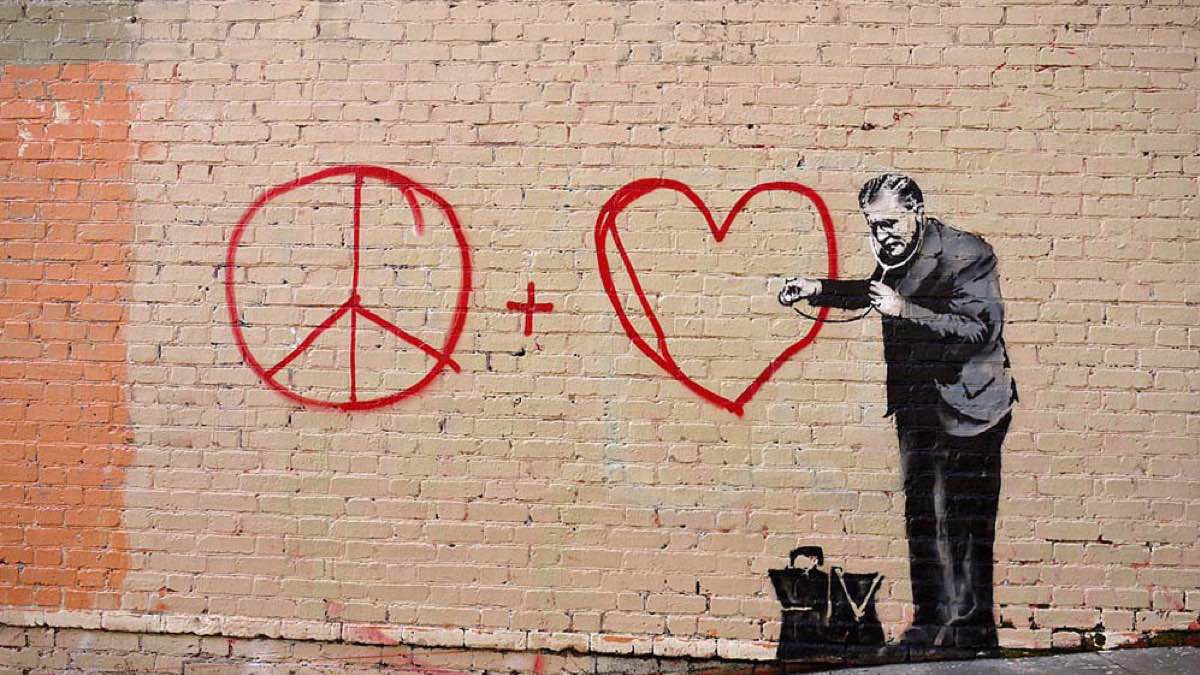
10 of the most famous Urban Art Murals
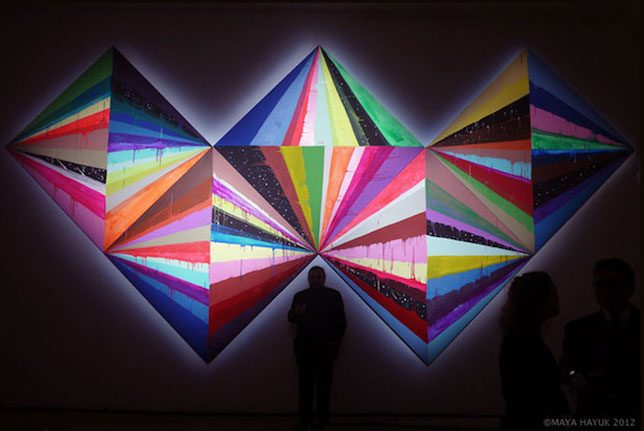
Although the street art movement officially began in 1960s Philadelphia, art itself quite literally began in the prehistoric “streets” of Indonesia. Figurative images of animals were painted across walls, identifying and marking ancient communities. Like art, revolutions also began in the streets, where the urban backdrop provided the means to unite individuals and voice their desires for change. This is why urban art’s presence is so important in our cities: it is not highfalutin, it is accessible by all, and as a result has left a considerable stencil-shaped mark on the contemporary art world. Artsper introduces the ten most famous urban art murals in the world.
1. Iheart, Nobody Likes Me, Stanley Park, Vancouver, Canada

An (arguably too young) boy holds a mobile phone, his face contorted with the agonising discovery that nobody has liked his latest Instagram post. At a time where we are permanently connected, we are simultaneously permanently disconnected from each other. Iheart explores this toxic need for validation, and how Instagram likes have become a crucial means for measuring self worth.
2. Dmitri Vrubel, My God, Help Me to Survive This Deadly Love, Berlin Wall, Germany
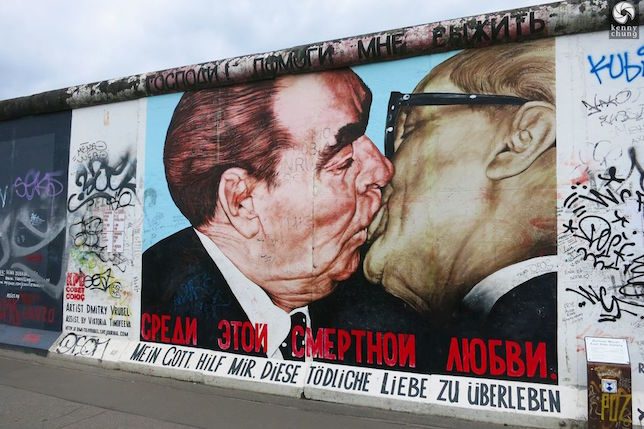
Vrubel’s mural is an interpretation of a photograph taken in 1979, at the 30th anniversary of the celebration of the German Democratic Republic (GDR). The kiss itself wasn’t intended romantically, it was a “Bruderkuss” (fraternal kiss), which was a popular Socialist greeting at the time. The men in the photograph are Leonid Brezhnev, the General Secretary of the Soviet Union, and Erich Honecker, the General Secretary of the Socialist Unity Party of the GDR. In the “deadly love” Vrubel refers to could be the ten-year military agreement put in place by the two states, which included the providing of chemical weapons to the Soviet Union. This mural is now emblematic of not only the Berlin wall, but also the city itself.
3. Lady Pink, Faith in Women, Minneapolis, USA

One of the few female artists to break the andocentric mould of street art, Ecuador-born, Queens-raised, Lady Pink, consistently celebrates the female figure through her murals. Pink’s folkloric goddesses serve not only to incorporate her South American roots and vibrant imagination, but communicate a profound political purpose. Faith in Women explores a somewhat feminised version of war; where a baby pink tanker nonchalantly runs over an unsuspecting rabbit, and dozens of guileless skulls congregate beneath a vibrant rainbow of colour. Chaotic, anarchic, turbulent and yet eerily childlike, Pink’s version of war is a critique of the mindless destruction imposed on nations at the hands (more often than not) of men.
4. Invader, Spiderman, Paris, France

Inspired by video games from the early 1980s (especially Space Invaders), Invader has created sculpted murals in over thirty countries and across sixty cities. Painted superheroes, gaming icons, fantastic figures… Like his pixelated characters, Invader invades the public space, and has been doing so since 1998. The French street artist has taken great lengths to keep his identity secret, creating his works and conducting interviews with complete anonymity.
5. Shepard Fairey, Make Art Not War, Santa Fe, USA

Undoubtedly one of the most influential street artists, Shepard Fairey is also an illustrator, graphic designer and political activist. Fairey’s art is a weapon against injustice, oppression and violence; allowing him to challenge socio-political inequalities through his large-scale murals. Make Art Not War, addresses not only the carnage of war, but the play on words reveals the only sentiment powerful enough to cease fire; love.
6. Banksy, Girl with Balloon, London, UK

In 2017, the enigmatic Banksy’s Balloon Girl was named Britain’s favourite artwork, beating the pastoral scenes of Constable’s 1821 painting, The Hay Wain. The heart-shaped balloon is symbolic of love and hope, and it floats just out of reach of the monochromatic silhouette of a young girl. Banky’s decision to depict such crucial notions through the tenuous form of a balloon, shows the fleeting nature of these sentiments, and how they can so easily drift away.
7. Vhils, Factory Worker, Tsuen Wan, Hong Kong

The urban landscape is truly Alexandre Farto’s (Vhils) canvas, yet instead of a spray can, Vhils’ go-to items are a hard hat and respirator. As he carves away brick, plaster and stone, the Portuguese artist manages to reveal highly detailed and beautiful bas-reliefs, as though they were intricately etched into bronze or ivory. Vhils frequently explores the damaging consequences of industrialisation and development in cities across the globe, representing the unsung heroes of the modern, machine-manic climate. In 2015, Vhils unveiled the portrait of a former factory worker on the wall of a Nan Fung Textiles building in Tsuen Wan, Hong Kong. The textiles building was being converted into a creative space called The Mills, reflecting the disposable nature of workers in the contemporary industrial climate.
8. Maya Hayuk, Pictures on Walls, London, UK

Feminist street artist, Maya Hayuk, is known for her vibrant, geometric compositions that dominate buildings worldwide. Although her lively abstractions are extremely aesthetically pleasing, her work has a deeper political undertone; Hayuk refuses to work with galleries if their representation of female artists falls below 10%.
9. Keith Haring, We the Youth, Philadelphia, USA

American street artist, Keith Haring, was not only an established street artist, but a social activist in his own right. His large-scale murals provided a discourse for homosexuality and AIDS, crushing taboos and addressing societal injustices through his visual poetry. Created in 1987, We the Youth is the only Haring mural that remains untarnished and in its original site. The famous piece was painted to commemorate the two-hundredth anniversary of the United States Constitution, playing on the phrase “We the people.”
10. MadC, 700 Wall, Berlin, Germany
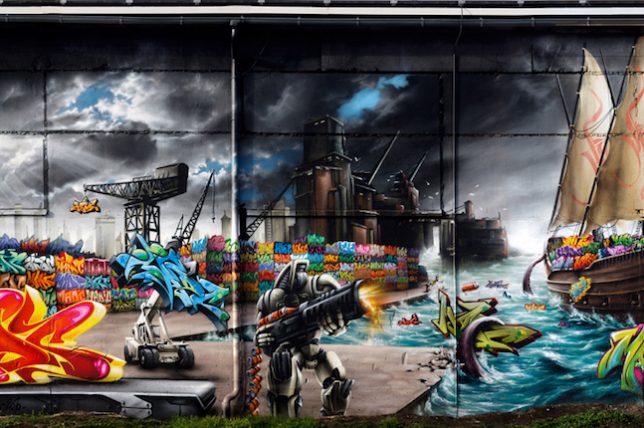
German artist, Claudia Walde (MadC), combines her formal artistic training with street art, rewriting contemporary urban art. Simply entitled 700 Wall, it refers to the 700 square metres her masterpiece covers, and can be seen on the train line between Berlin and Halle. Undulating colours and graphic scenes ripple across the surface of MadC’s mural, and is emblematic of the artist’s capability to combine a scrupulous, academic approach, with an unrestrained visual lyricism.

About Artsper
Founded in 2013, Artsper is an online marketplace for contemporary art. Partnering with 1,800 professional art galleries around the world, it makes discovering and acquiring art accessible to all.
Learn more



